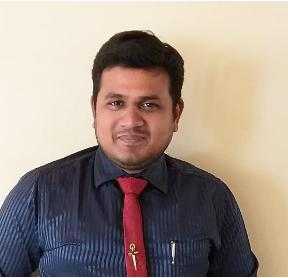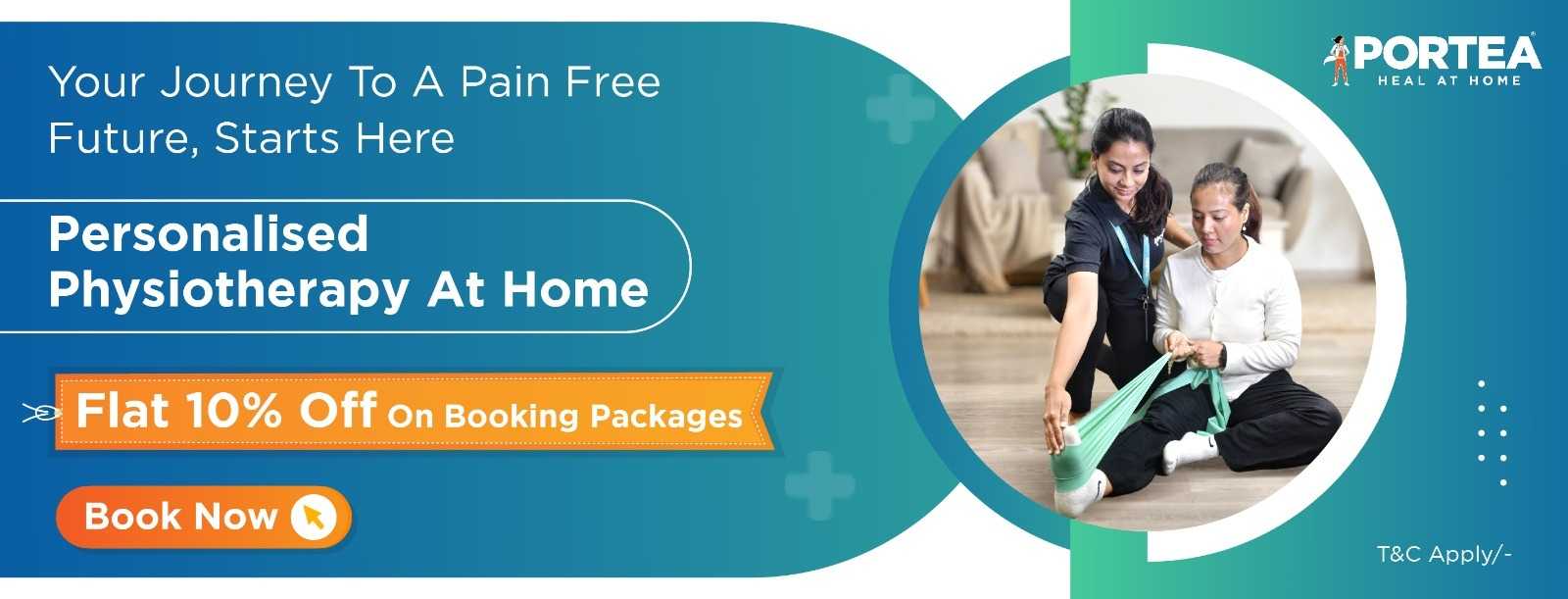
Expert Physiotherapy at Home
Certified physiotherapists visit you at home to provide focused, one-on-one care tailored to your needs. With no travel or waiting rooms, recovery happens in a setting that is comfortable, familiar, and built around your convenience.
Personalised Recovery Programmes
Every treatment plan is designed to suit your condition, goals, and pace. Our physiotherapists follow structured, evolving protocols to ensure consistent progress, with each session aligned to deliver meaningful results.
Trusted Physiotherapists. Real Results.
Our team comprises experienced, background-verified physiotherapists trusted by thousands of families. With a strong focus on safety, reliability, and clinical outcomes, we make recovery at home both effective and reassuring
Patient Testimonials
Portea Physiotherapists for Home Visits
Meet some of our experienced and dedicated healthcare professionals

Dr. Lokesh G
Physiotherapist
Specializations
Experienced in Neurological rehabilitation, Orthopaedic physiotherapy, and Paediatric care
Delivers structured, high-impact treatment plans across neuro, ortho, and paediatrics—ensuring safety, comfort, and measurable recovery at every stage.

Dr. Mohammed Sarwar
Physiotherapist
Specializations
Experienced in Neurological rehabilitation, Adult physiotherapy, and Paediatric care
Combines deep clinical expertise with a compassionate approach, supporting both adults and children through neuro and physical rehabilitation that promotes long-term independence and recovery.

Dr. Nelapati Divya
Physiotherapist
Specializations
Skilled in Orthopaedic rehabilitation, Manual therapy techniques, and Paediatric physiotherapy
Brings a personalised, hands-on approach to healing—combining structural expertise with paediatric sensitivity to restore movement, relieve pain, and improve everyday function.

Dr. Naveen V
Physiotherapist
Specializations
Trained in Pain management, Cardiac and Orthopaedic rehabilitation, Neurological care, and Neural tissue mobilisation
Brings clinical precision and empathy together—designing science-backed recovery protocols for pain relief, nerve mobilisation, and cardio-neuro-ortho rehabilitation across all age groups

Dr. Miloni Savla
Physiotherapist
Specializations
Holds an MPT in Orthopaedics with a focus on Musculoskeletal rehabilitation and strength recovery
Delivers focused, movement-oriented therapy grounded in orthopaedic science—helping patients rebuild strength, restore function, and return to daily life with confidence

lower back pain – common causes & treatment
Lower back pain is one of the most common health issues creeping among working professionals. Before we discuss Low Back problems among working professionals, let me inform you that though I’m a healthcare professional, I have an affinity for computers. I am responsible for this and I enjoy committing to it.
Anyway, studying several years of medical science, it always helped me to cure the sufferers and what they say “knowledge never goes in vain” seems to be truth. Here, I’d like to share some interesting health tips for all those facing major Low Back problems due to regular computer use (or overuse!).
Back pain is one of the most common work-related injuries. Heavy lifting, repetitive movements and sitting at a desk all day can take a toll on your back.
common causes of back pain
- Exerting too much force on your back — such as by lifting or moving heavy objects — can cause injury.
- Repeating certain movements, especially those that involve twisting or rotating your spine, can injure your back.
- An inactive job or a desk job can contribute to back pain, especially if you have poor posture or sit all day in a chair with inadequate back support.
back pain and lifestyle factors
Factors such as aging, obesity and poor physical condition also can contribute to back pain. Focus on maintaining a healthy weight minimizes stress on your back and can help.
Start by eating a healthy diet. Make sure you get enough calcium and vitamin D. These nutrients can help prevent osteoporosis, a condition that causes weak and brittle bones and is responsible for many of the bone fractures that lead to back pain.
Combine aerobic exercises, such as swimming or walking, with exercises that strengthen and stretch your back muscles and abdomen. Exercises that increase your balance and strength can also decrease your risk of falling and injuring your back. Consider tai chi, yoga and weight-bearing exercises that challenge your balance.
Preferably spread throughout the week — and strength training exercises at least twice a week.
Smoking reduces blood flow to your lower spine, which can contribute to spinal disc degeneration and slow healing from back injuries. Coughing associated with smoking can also cause back pain.
steps to avoid and prevent back pain and injuries at work
- Pay attention to posture. When standing, balance weight evenly on feet. Don’t slouch. To promote good posture when sitting, choose a chair that supports your spinal curves. Adjust the height of the chair so that the feet rest flat on the floor or on a footrest and thighs are parallel to the floor.
- Lift properly. When lifting and carrying a heavy object, lift with legs and tighten core muscles. Hold the object close to your body. Maintain the natural curve of your back. Avoid twist when lifting.
- Modify repetitive tasks. Use lifting devices, when available, to help you lift loads. Try to alternate physically demanding tasks with less demanding ones. If you work at a computer, make sure that your monitor, keyboard, mouse and chair are positioned properly. If you frequently talk on the phone and type or write at the same time, place your phone on the speaker or use a headset. Avoid unnecessary bending, twisting and reaching. Limit the time spend carrying heavy briefcases, purses and bags. Consider using a rolling suitcase.
- Listen to your body. If you are sitting for a prolonged period, change the position often. Periodically walk around and gently stretch muscles to relieve tension.
back pain treatment
Treatment for low backpain generally depends on whether the pain is acute or chronic. Conventionally used treatments and their level of supportive evidence include:
Hot or cold packs: Ease pain and reduce inflammation for people with acute, subacute, or chronic pain, allowing for greater mobility among some individuals.
Activity: Bed rest should be limited. Individuals should begin stretching exercises and resume normal daily activities as soon as possible while avoiding movements that aggravate pain.
Strengthening exercises: Maintaining and building muscle strength is particularly important for persons with skeletal irregularities.
Physical therapy programs to strengthen core muscle groups that support the lower back, improve mobility and flexibility, and promote proper positioning and posture often used in combinations with other interventions. To avail physical therapy at home, opt for Portea’s physiotherapy service.
about author
Dr. Kalyani is currently working with Portea. She holds a bachelors degree in Physiotherapy from MUHS Nashik University. She has over 6 years of experience in orthopedics, sports injury, neurological and Rehab cases. Previously she was working as a Physio Care Adviser for Smith &Nephew and managed Rehab – Donjoy in Sports Related Conditions.
Doctor Consultation
Nursing
Physiotherapy
Trained Attendant
Elder Care
Mother & Baby Care
Lab Tests
Medical Equipment
Speciality Pharma
Critical Care





